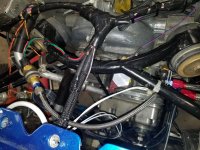echowhiskey
Member
I bought my 6 with pressure sensor mounted to end of a short copper tube very small ID, maybe 1/8.
Someone mentioned to me that this will work harden and fail over time. The plane is a quality build with engine overhauled 400 hours ago.
Is this something I should worry about or is this common on other lycomings?
Someone mentioned to me that this will work harden and fail over time. The plane is a quality build with engine overhauled 400 hours ago.
Is this something I should worry about or is this common on other lycomings?





